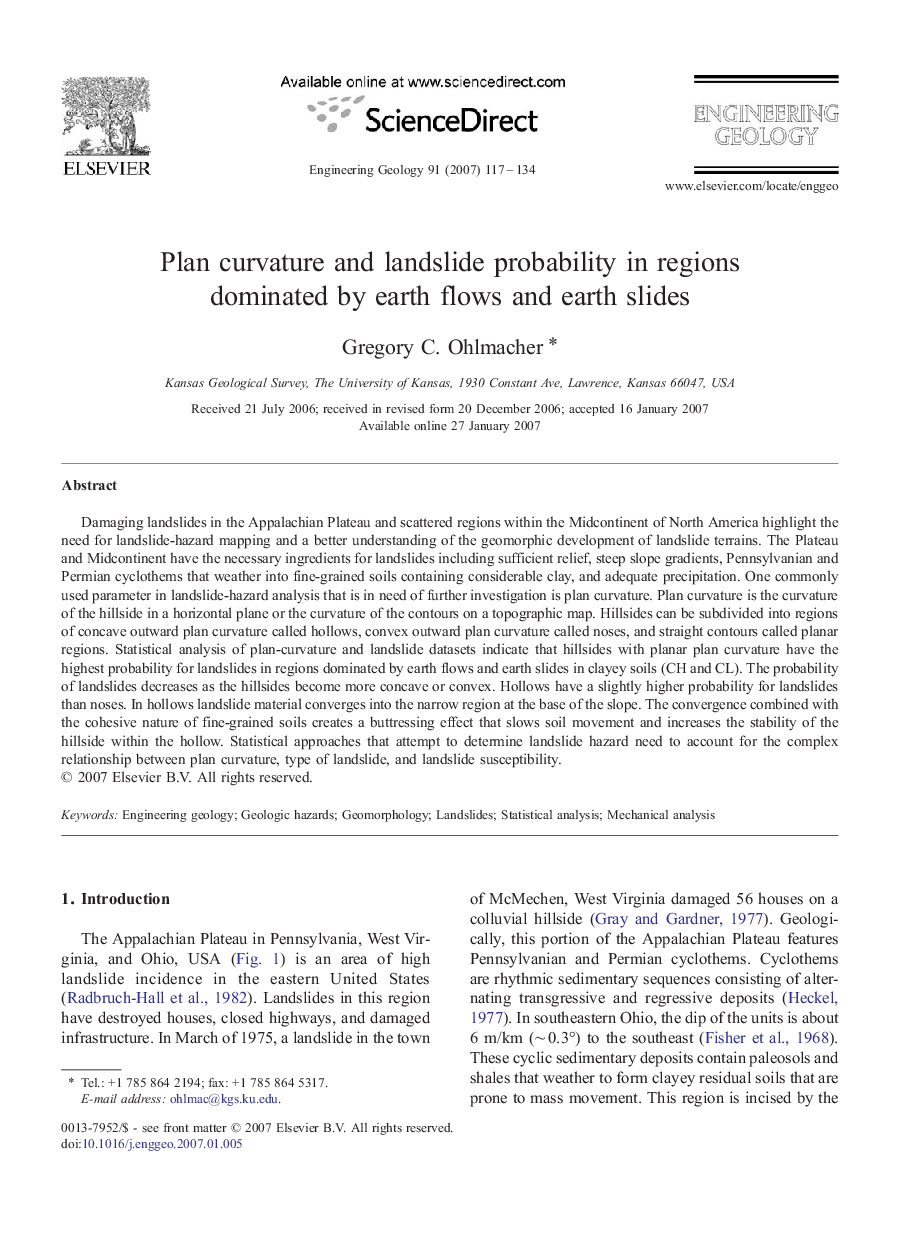| Article ID | Journal | Published Year | Pages | File Type |
|---|---|---|---|---|
| 4744705 | Engineering Geology | 2007 | 18 Pages |
Damaging landslides in the Appalachian Plateau and scattered regions within the Midcontinent of North America highlight the need for landslide-hazard mapping and a better understanding of the geomorphic development of landslide terrains. The Plateau and Midcontinent have the necessary ingredients for landslides including sufficient relief, steep slope gradients, Pennsylvanian and Permian cyclothems that weather into fine-grained soils containing considerable clay, and adequate precipitation. One commonly used parameter in landslide-hazard analysis that is in need of further investigation is plan curvature. Plan curvature is the curvature of the hillside in a horizontal plane or the curvature of the contours on a topographic map. Hillsides can be subdivided into regions of concave outward plan curvature called hollows, convex outward plan curvature called noses, and straight contours called planar regions. Statistical analysis of plan-curvature and landslide datasets indicate that hillsides with planar plan curvature have the highest probability for landslides in regions dominated by earth flows and earth slides in clayey soils (CH and CL). The probability of landslides decreases as the hillsides become more concave or convex. Hollows have a slightly higher probability for landslides than noses. In hollows landslide material converges into the narrow region at the base of the slope. The convergence combined with the cohesive nature of fine-grained soils creates a buttressing effect that slows soil movement and increases the stability of the hillside within the hollow. Statistical approaches that attempt to determine landslide hazard need to account for the complex relationship between plan curvature, type of landslide, and landslide susceptibility.
